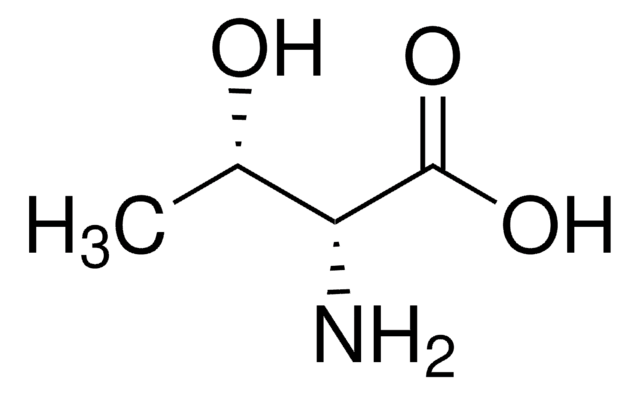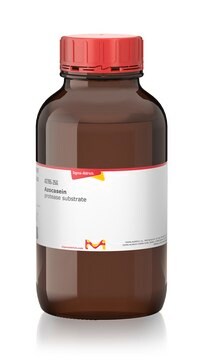T1520
DL-Threonine
BioReagent, suitable for cell culture, suitable for insect cell culture
Synonym(s):
(±)-2-Amino-3-hydroxybutyric acid
Sign Into View Organizational & Contract Pricing
All Photos(2)
About This Item
Linear Formula:
CH3CH(OH)CH(NH2)COOH
CAS Number:
Molecular Weight:
119.12
Beilstein:
1721647
EC Number:
MDL number:
UNSPSC Code:
12352209
PubChem Substance ID:
NACRES:
NA.75
Recommended Products
product line
BioReagent
Quality Level
Assay
≥98.5% (HPLC)
form
powder
technique(s)
cell culture | insect: suitable
cell culture | mammalian: suitable
color
white to off-white
mp
244 °C (dec.) (lit.)
SMILES string
C[C@H](O)[C@@H](N)C(O)=O
InChI
1S/C4H9NO3/c1-2(6)3(5)4(7)8/h2-3,6H,5H2,1H3,(H,7,8)/t2-,3+/m0/s1
InChI key
AYFVYJQAPQTCCC-STHAYSLISA-N
Looking for similar products? Visit Product Comparison Guide
General description
L-Threonine is an essential proteinogenic amino acid incorporated into proteins as directed by the genetic code. Threonine is a polar amino acid with a hydroxyl containing R-group that can participate in glycosylation reactions.
Application
For use in insect and mammalian cell culture applications where the pure L-form is not required.
Suitability
This DL-Threonine has been qualified for use in animal and insect cell culture applications.
comparable product
Storage Class Code
11 - Combustible Solids
WGK
WGK 1
Flash Point(F)
Not applicable
Flash Point(C)
Not applicable
Personal Protective Equipment
dust mask type N95 (US), Eyeshields, Gloves
Choose from one of the most recent versions:
Already Own This Product?
Find documentation for the products that you have recently purchased in the Document Library.
Gustavo Luis Leonardo Scalone et al.
Journal of agricultural and food chemistry, 63(22), 5364-5372 (2015-05-15)
Pyrazines are specific Maillard reaction compounds known to contribute to the unique aroma of many products. Most studies concerning the generation of pyrazines in the Maillard reaction have focused on amino acids, while little information is available on the impact
Our team of scientists has experience in all areas of research including Life Science, Material Science, Chemical Synthesis, Chromatography, Analytical and many others.
Contact Technical Service





